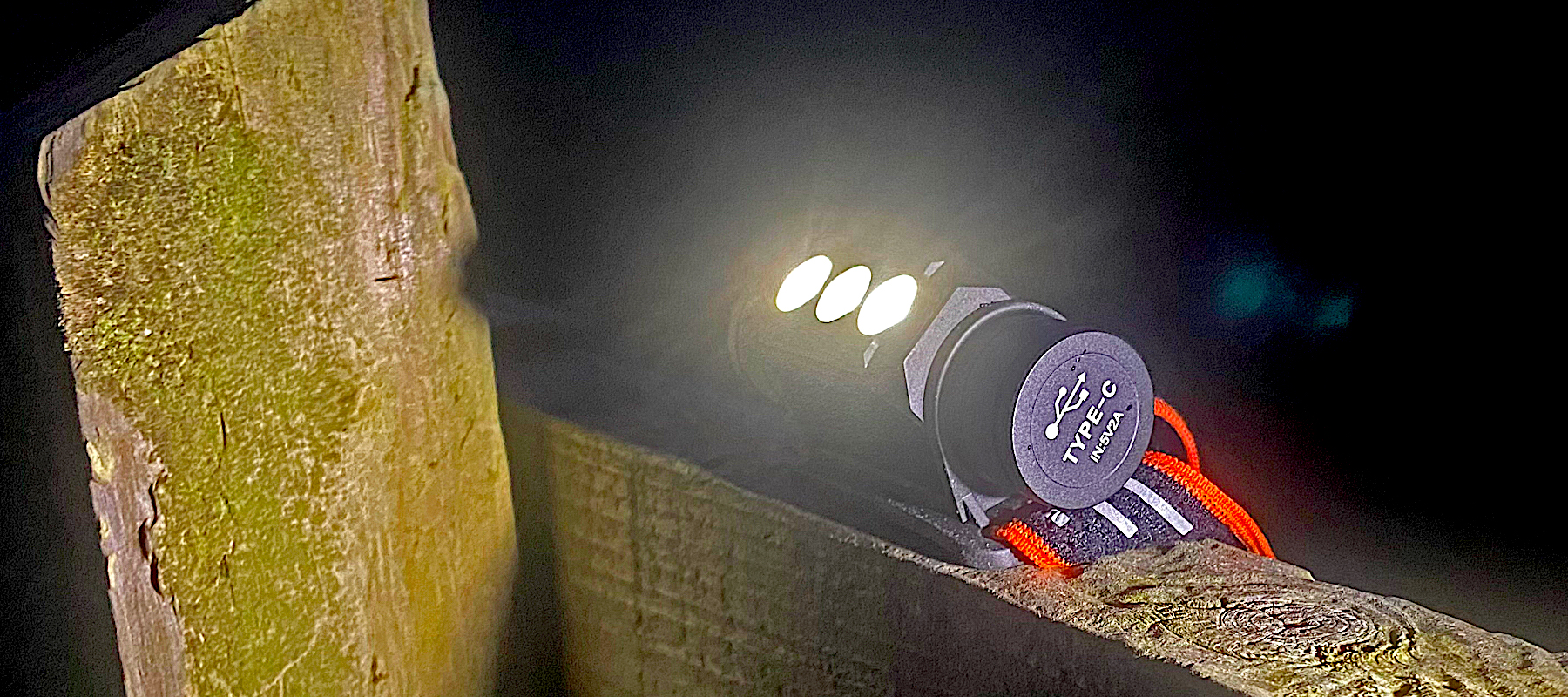Advnture Verdict
The AceBeam H50 2.0 rechargeable headlamp packs a proper punch, with a beam that can be spread across a wide range or directed over an impressively long distance. But it’s more than just a big blazer. The three-light offering and five brightness settings make it super versatile and useful in all sorts of after-dark scenarios, and while it’s a bit bulky for use while running, it’s excellent for hiking, trekking, backpacking and camping. The reflective flourishes on the comfortable head harness are a good touch too.
Pros
- +
Excellent range
- +
Very tough (impact- and waterproof)
- +
Rechargeable but also works with standard batteries
- +
Spot and flood lighting options, plus multiple light degrees of brightness
- +
Pre-programmed SOS mode
- +
Easy to operate, with a single button
- +
Breathable headband with reflective flourishes
Cons
- -
Bulky, with all the weight positioned in the front
- -
Fiddly to tilt
- -
No red light option
- -
No rear light
- -
No lock
You can trust Advnture
AceBeam H50 2.0 Headlamp: first impressions
The lighting solutions we’ve been testing from Chinese brand AceBeam recently are anything but half-hearted, and the AceBeam H50 2.0 Headlamp is no exception. This unit came fully charged, and within seconds of playing around with it I was half-blinded and thoroughly blown away by the astonishing brightness of the beam on its highest settings.
• List price: $89.90 (US)
• Weight: 142g / 5oz
• Max lumens: 2,000
• Max beam length: 141m / 463ft
• Burn time: Up to 30 days on ultra low
• Light modes: Ultra low / low / medium / high / turbo / SOS
• Water resistance: IP68 (submersible to 2m)
• Batteries: USB-C rechargeable battery included, also works with two standard CR123 batteries
• Compatibility: Hiking, mountaineering, caving, backpacking, camping, general use
Although not particularly heavy, the AceBeam H50 2.0 Headlamp did feel a tad chunky in my hand, however, and somewhat clunky on my head when I first put it on. This is mainly down to the fact that the battery unit and the lighting system are all housed in the cylindrical-shaped main body of the torch, and the design means you have to carry everything slap bang in the middle of your forehead.
This setup means the H50 can’t possibly be as low profile as head torches that split the power source and the light, like the Biolite 425, and as such, I don’t think the H50 2.0 is particularly well-suited to performing as a running headlamp. But the lumen output of the H50 is absolutely phenomenal, and it instantly looked like it could join the ranks of the best headlamps on the market for hiking and camping.
AceBeam H50 2.0 Headlamp: in the field
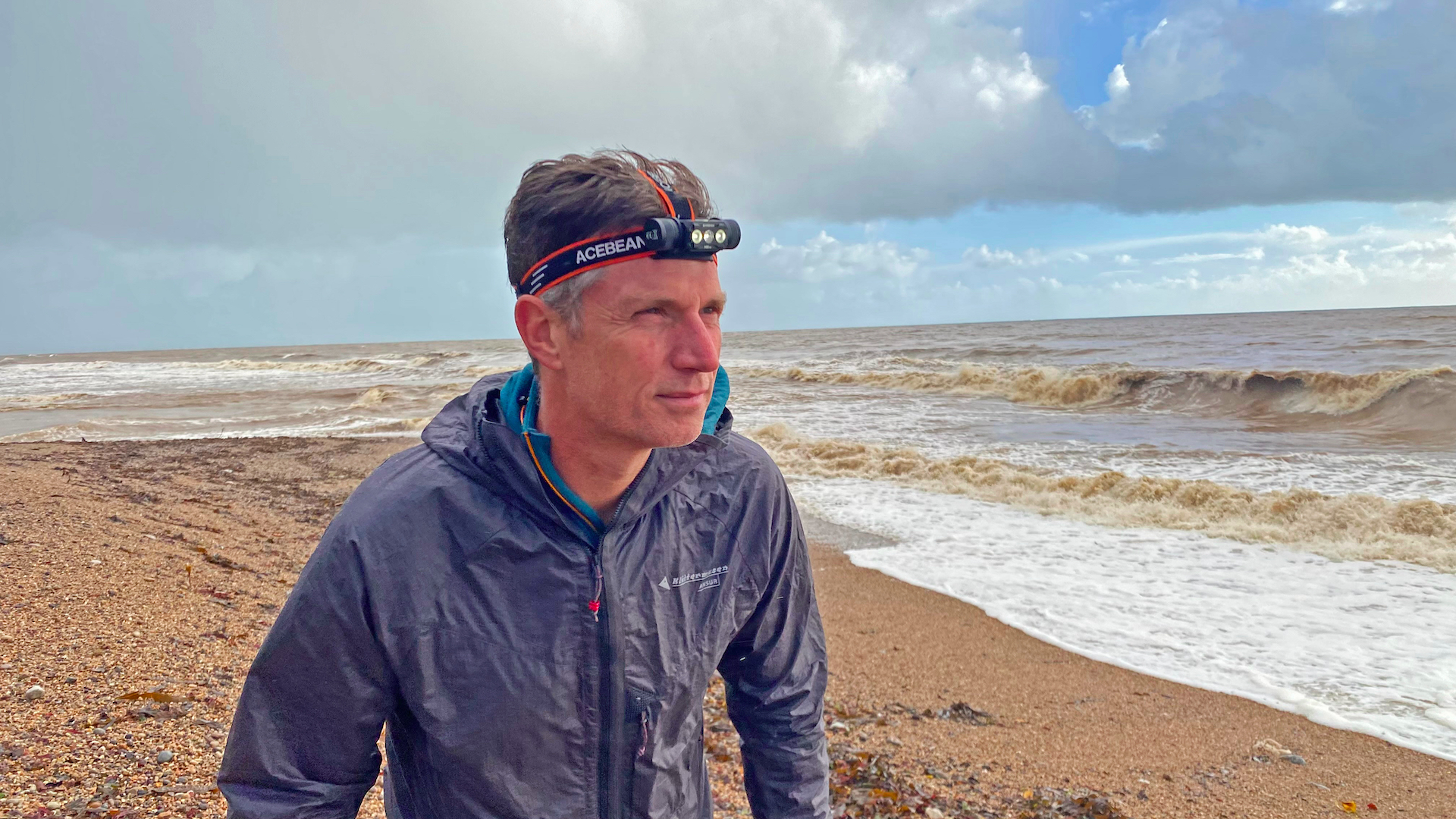
To find out whether the H50 2.0 would live up to its high-performance promise, I’ve been putting this headlamp to the test over the past few months. I took it on camping and hiking trips in the south of England, including during some wild camping escapades on Dartmoor, and on some hikes along the South West Coast Path and Quantock Hills that spilled over into the hours of darkness.
The H50 2.0 boasts three neutral white 5,000k LED lights, arranged in a linear setup, and has five brightness settings, all of which combine to offer a highly impressive range of lighting options. And with the simple-to-use, single-button operating system, it’s genuinely easy to toggle through all the choices.
By double-clicking the centrally located button, which is easy to find when the unit is on your head and can be operated with hiking gloves on, you can select ‘spot’ (just the middle light on), ‘flood’ (both the outside lights on) and ‘dual’ (all three lights on). From there you just long-hold the button (for a few seconds) to set the degree of brightness, which goes from ultra-low through five options, ending in something that is frankly blinding from several fields away.
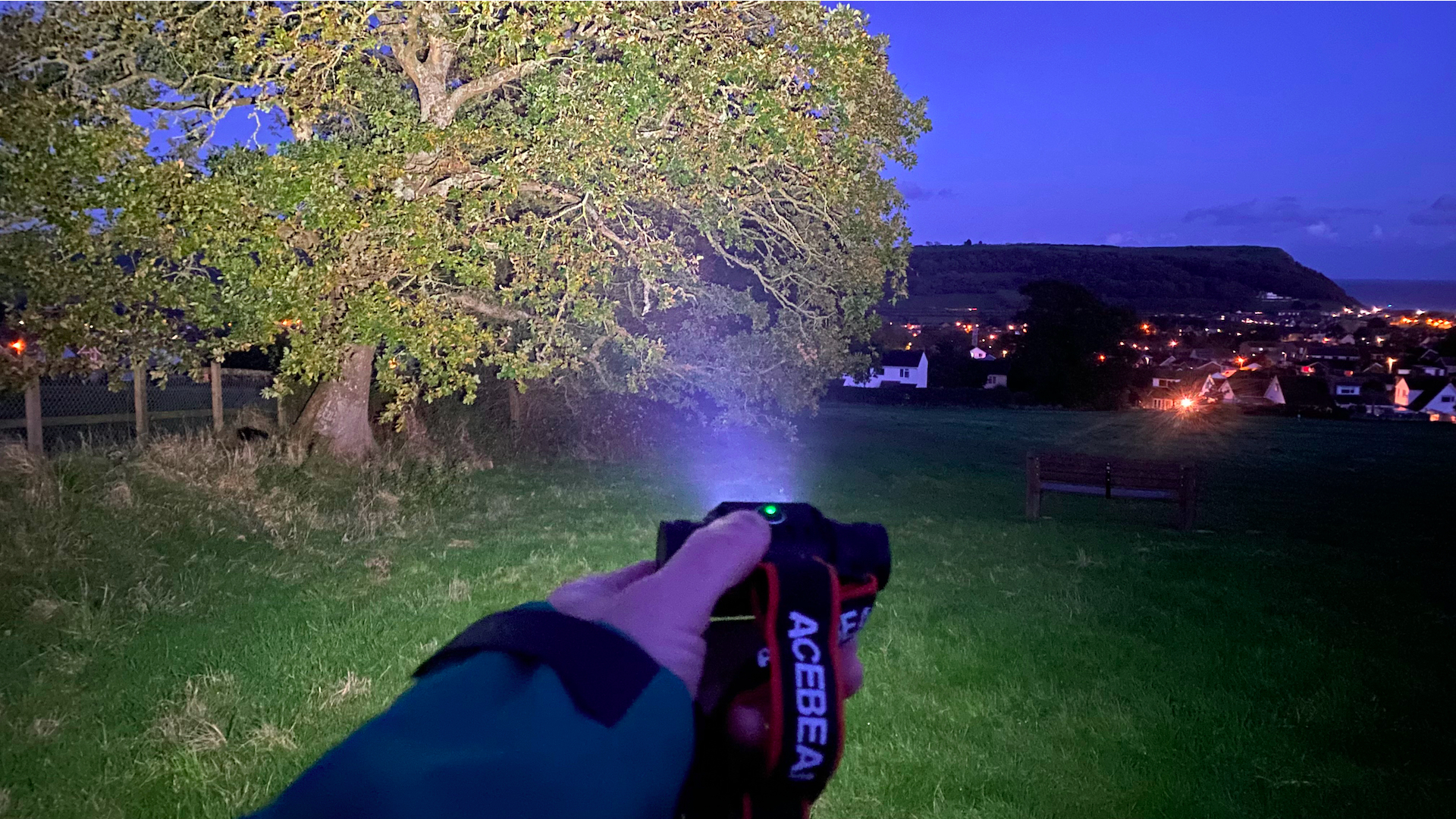
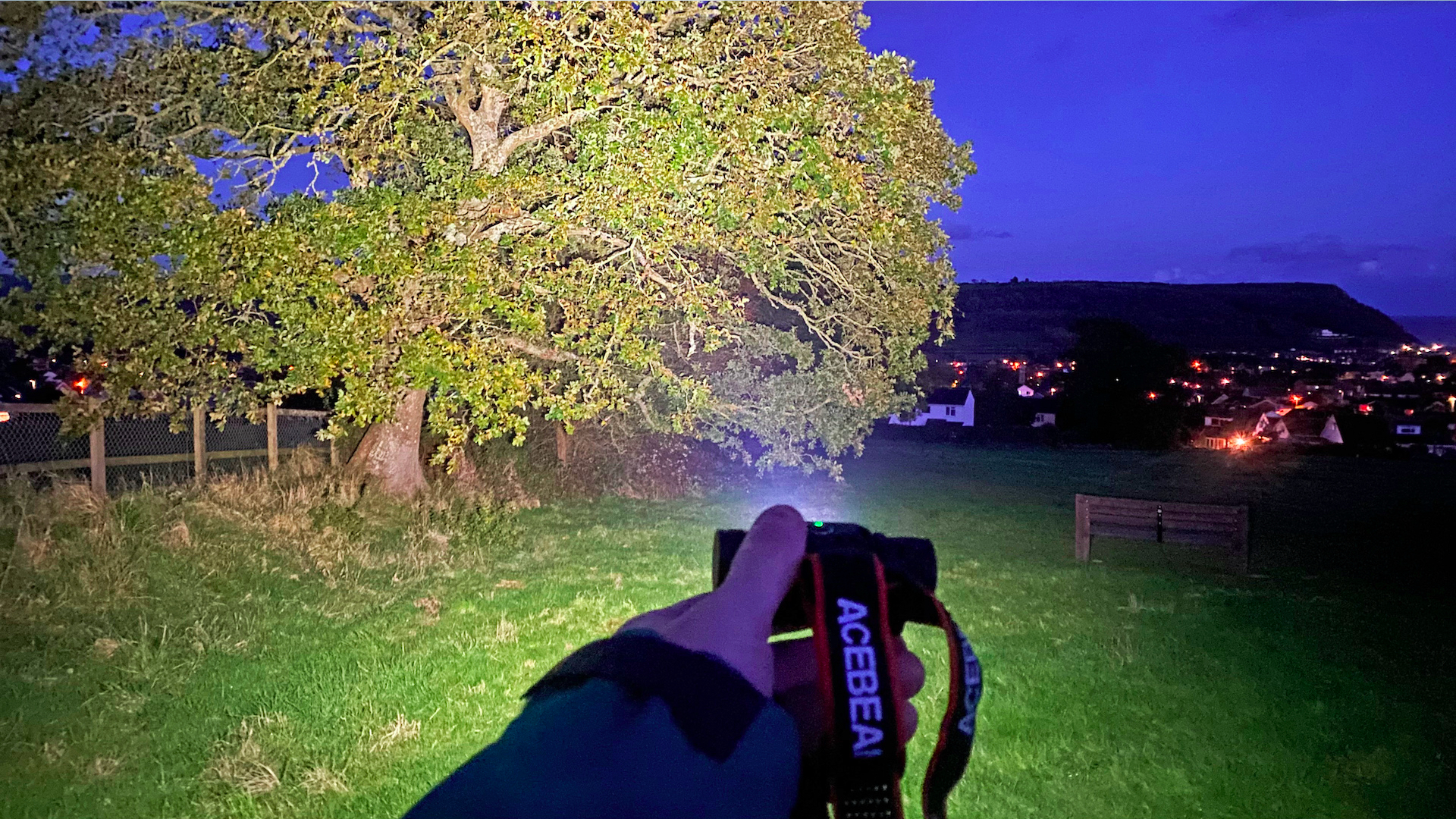
On the flood or dual setting, the beam spreads across a 170° arc, giving you a really wide field of visibility. The maximum range of the headlamp when all three lights are blazing is over 140m (on the turbo setting), while on the spot setting you get a beam that stretches 103m (again, on turbo). The turbo setting only lasts for a few seconds, but it’s occasionally useful to be able to quickly blast a beam up along the trail to see what’s coming up, or perhaps to signal to someone across the valley.
The AceBeam H50 2.0 Headlamp is powered by a USB-C rechargeable battery that comes with the unit, but you can also use a couple of standard CR123 batteries, which is useful on multi-day adventures when you’re worried about the charge running out.
There are too many configurations to go into all the burn times, but they are available on the website, and to give you an idea: on the medium brightness setting the battery charge will last for three hours with all three lights on (dual), and nine hours with one light on (spot). On the low or ultra-low settings (which is still bright enough to read by) the burn time stretches from hours to days.
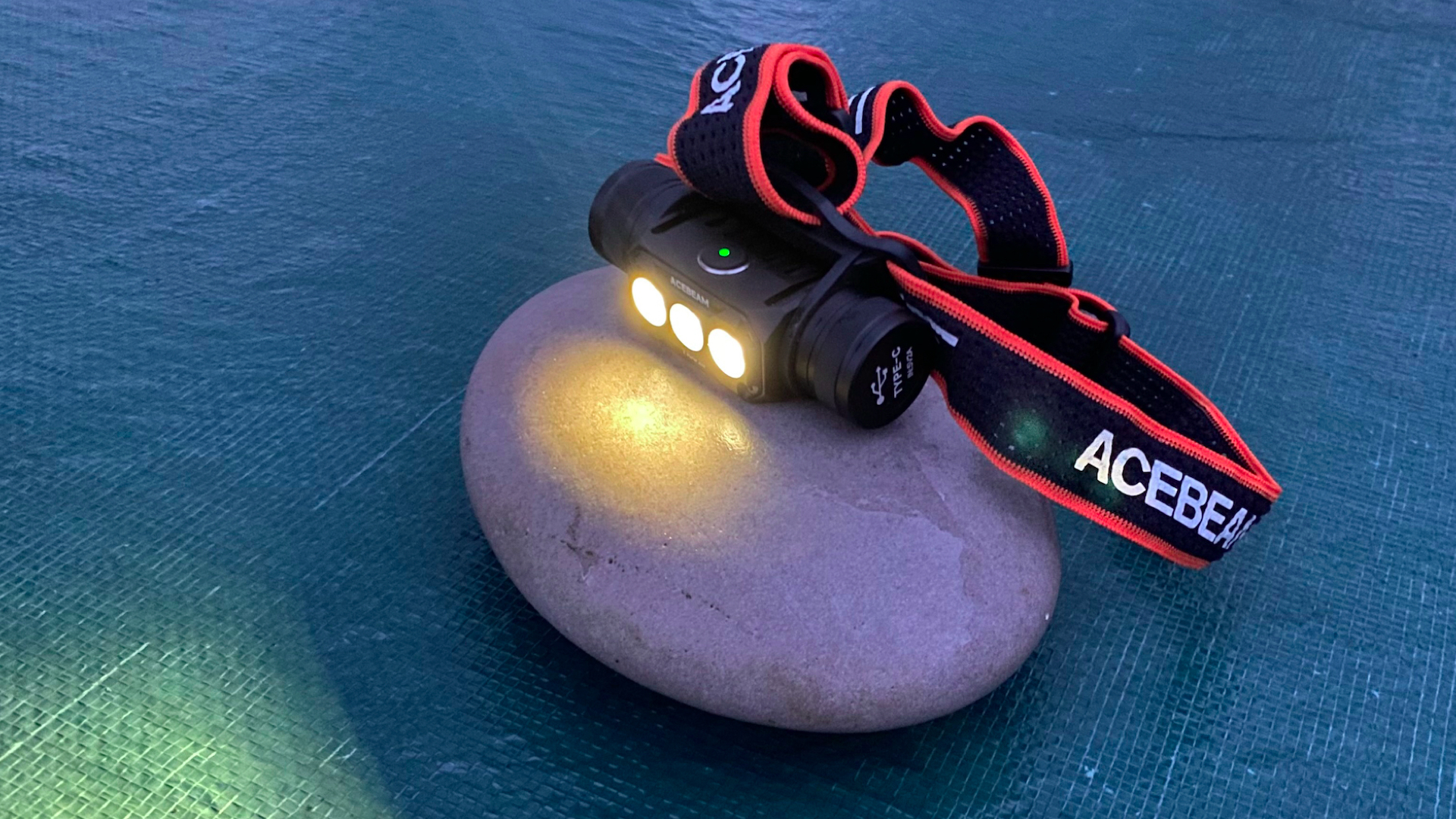
The H50 has a preprogrammed SOS setting, but there’s no red (or other colored) light, which is a shame because I find such settings useful for preserving my night vision, for example when I’m taking a look at a map, or getting up during the night while sharing a tent.
The AceBeam H50 2.0 has a comfortable and breathable headband, which has reflective features, but there is no rear light to alert vehicles to your presence when you’re hiking on roads.
It is also slightly fiddly to tilt the torch, because there’s a threaded cap on both ends of the cylindrical-shaped body (to house the battery), so it’s easy to accidentally loosen one of these rather than achieve the beam angle you’re looking for.
As already mentioned, it’s not an especially heavy unit, but it is chunky and you carry all the weight on the front. However, the AceBeam H50 2.0 Headlamp is a reassuringly robust torch that can be fully submerged in water (up to 2m) and will survive all kinds of drops and clouts. It’s also available for a pretty reasonable price considering its capabilities.

Author of Caving, Canyoning, Coasteering…, a recently released book about all kinds of outdoor adventures around Britain, Pat has spent 20 years pursuing stories involving boots, bikes, boats, beers and bruises. En route he’s canoed Canada’s Yukon River, climbed Mont Blanc and Kilimanjaro, skied and mountain biked through the Norwegian Alps, run an ultra across the roof of Mauritius, and set short-lived records for trail-running Australia’s highest peaks and New Zealand’s Great Walks. He’s authored walking guides to Devon and Dorset, and once wrote a whole book about Toilets for Lonely Planet. Follow Pat’s escapades on Strava here and Instagram here.
